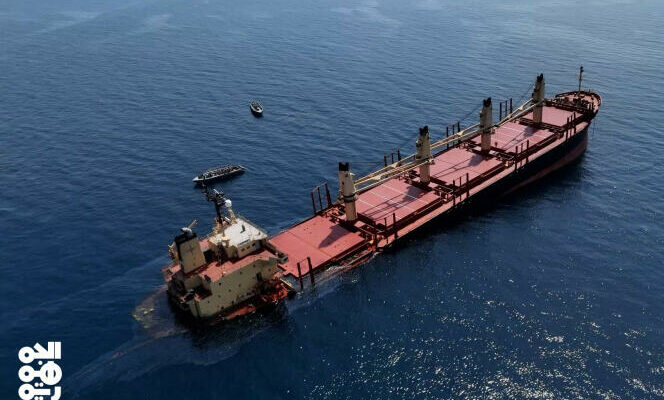For countries in the Horn of Africa, at the eastern tip of the continent, missile and drone attacks in the Red Sea are not a vague threat. Djibouti, for example, is located directly opposite Yemen, a country largely controlled by Houthi rebels. Barely 30 kilometers separate the two States in the narrowest part of the Bab Al-Mandab Strait (“the gate of lamentations”, in Arabic), which marks the entrance to this maritime axis leading to the Suez Canal. On February 24, an explosion was recorded at sea just 70 nautical miles (130 km) from the Djiboutian capital, according to the British maritime safety agency UKMTO.
These attacks carried out since mid-November by the Houthis, who claim to act in solidarity with the Palestinians and target ships they consider linked to Israel, are shaking the global maritime ecosystem. Around 30% of the world’s container transport passes through the Red Sea and then the Suez Canal, a major route linking Asia to Europe in particular.
In response to the threat, the world’s three major shipowners – MSC, Maersk and CMA CGM – have diverted their ships to the route around the Cape of Good Hope, in the far south of Africa. A longer detour (ten additional days), more expensive and more polluting. However, a return to normal does not seem to be in immediate sight: faced with the strengthening of American and British military operations and the arrival of a European force, the Yemeni rebels promised at the end of February a “intensification”.
The consequences of this crisis are being felt far from the Gulf of Aden. In Germany, for example, Tesla announced a temporary suspension of its production of electric vehicles in February due to a lack of components manufactured in Asia. But for the countries of the Horn of Africa (Djibouti, Somalia, Eritrea and Ethiopia in the most restricted sense, but Kenya and Sudan often being included), the excitement is on a completely different scale.
A strategic path
In the region, “foreign trade is highly dependent on the Suez Canal”, underlines a report published by the UN agency Unctad in February: 31% of Djibouti’s foreign trade and 34% of Sudan’s take this strategic route. “In comparison, although much larger in absolute terms, only 7% of Germany’s foreign trade volume passes through the Suez Canal,” the report states.
Exact figures for falling revenues at the region’s main ports are difficult to obtain. But they should be substantial. In Djibouti for example, 75% of GDP comes from services, essentially made up of the significant port economy developed over the last twenty years to make this country, desert but strategically located, a logistics hub.
You have 50.28% of this article left to read. The rest is reserved for subscribers.
